
Watchdog journalism is a public good. Everyone benefits from it, and we need to work together to fund it for everyone’s benefit to ensure we have a strong society.
Does the 1% Internet Rule provide a model for doing so?
I’m basing my business model for the future of local journalism on the 90-9-1 model, with the hypothesis that readers of ThePublicRecord.ca will be split between 90% who will only consume content, 9% who will become patrons and participants, and 1% who will become major patrons, daily participants, and promoters of local public interest journalism.
The 10% (9% + 1%) who will fund public interest journalism will do so without a paywall, and the 1% who will be major patrons will not fund public interest journalism that is not open licensed to all. (The 1% in this rule should not be confused with the top 1% of income earners.)
Public service journalism cannot exist behind a paywall. If it only serves a niche audience, it is no longer a public good which commands access to public officials and bodies that taxpayers are subsidizing by providing space, resources, and hiring media/communication officers to support the production of news by journalists.
It seems to be a dilemma: the paywall won’t work because it decreases the moral authority of journalism, but giving away news without a hard paywall means people do not need to pay to consume it.
The Public Record takes this a step further. We open culture all work using the Creative Commons Attribution-ShareAlike 4.0 license.
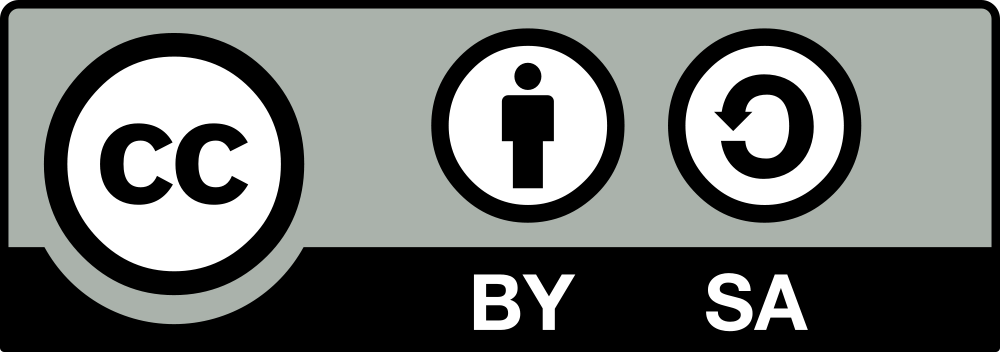
There Must Be Someone Who Will Only Pay If Forced
I only met one person who said they were not funding my work because it wasn’t behind a paywall. Once I explained to them the importance of my work as a public good, they became a patron. Even if they had not – and they surprised me by asking for a paywall – I would lose more patrons and supporters from putting up a paywall than I would ever gain with one.
Overwhelmingly, I’ve heard people who pay for journalism behind paywalls express frustration at the clumsy implementation of paywalls and the need to login to read local news. I’m a paywall subscriber and would pay regardless, but I take steps to block paywalls. (Mobile provides an opportunity to provide value-added features to subscribers, more on that later in the piece.)
If paywalls are not the solution to the challenge of funding journalism in the information age, then what are the solutions?

The Internet Is Not The Problem
Cuts to local journalism started years prior to the arrival of the early Internet as corporations consolidated large media conglomerates.
To increase shareholder profits, local newsrooms were ordered to close bureaus, slashing beat reporters covering the provincial and federal governments. Municipal affair, local amateur sports, local culture coverage cut, use of wire copy increased, and entire sections started to disappear.
The void is obvious to those at Queen’s Park. In 2010, in a Ryerson Review of Journalism interview, Toronto Star columnist Jim Coyle honestly stated what he thought of The Hamilton Spectator using his Torstar wire copy instead of having its own journalist at Queen’s Park:
“I don’t mind saying it: I don’t have a Hamilton perspective. I’m an east Toronto guy, working for a Toronto paper, and that’s what I write about. The interests of Hamilton are not at the top of my mind most days when I’m writing. I don’t think the papers are terrifically served.”
The Internet was not a factor in the cuts of the 1990s, widespread primary adoption didn’t occur until the early mid-00s with the invention of the iPhone and corporate dominance of the Blackberry smartphone.
The Internet provides the opportunity to reverse the downward slide of journalism that started in the 1990s. It may not seem this way because the Internet ended the marriage of convenience that advertising made to journalism in the mid-20th Century.
With the loss of advertising dollars, weakened by cuts in the ‘90s, and lacking the ability to control their destiny by investing in better journalism and innovation, newspapers were unable to respond to the smartphone revolution.
They lost their local connection and corporate headquarters wasn’t willing to invest in better journalism to create a product people would pay more for. (Read Robert Niles’ excellent piece Want to cover local? Then you’d better BE local for a great synopsis of the local problem in conglomerate media.)
The chart below of American newspaper revenue and number of journalists shows this trend clearly.

The early 90s recession combined with consolidation to create the first sustained layoffs.
Even as revenue and profits spiked in the late 90s, layoffs continued. 2008’s recession was the final divorce. The marriage was over, advertising left and many journalists found themselves unable to find jobs.
(There is no similar chart for Canadian newspapers. While there were cuts in the early 90s, the launch of The National Post in 1998 decreased the cuts as a short newspaper war ensured.)
Fewer Journalists, Less Depth, Yet More Need for Journalism
We live in an age of information overload but much of what’s available needs more depth and explanation. We need good journalism more than ever before.
The future of professional journalism will not be short microbursts of information, it will be in-depth deep knowledgeable evidenced-based reporting produced by journalists able to dedicate significant time and effort into deeply reporting and analyzing information.
We need journalism that doesn’t say just what happened, but journalism that informs why and enables readers to act upon information to improve their lives and their communities. He-said, she-said doesn’t cut it.
The challenge is that we have fewer journalists to cover the news and more pressure on the remaining journalists to produce more stories that generate more clicks, and to chase the new holy grail of corporate journalism – the viral news story.
Against this pressure, we need to break the cycle and find a new way of supporting watchdog journalism.
The Future is Here, It’s Just Not Funded Yet
There is a rising tide of independent local journalists who are becoming entrepreneurial in addressing the challenging task of finding a business model for the future of public interest watchdog journalism.
The web allows anyone to publish what they are seeing. It allows politicians and institutions to directly communicate their message (and propaganda), and it enables for the rebuilding of local journalism because the cost of entry is no longer a multi-million dollar printing press and distribution network.
It enables individuals to step up and fulfill the need for local watchdog journalism with live web broadcasts of public meetings, to publish multiple articles about what is happening at City Hall, to organize panel discussions, and to help make our community better by providing for an informed democratic discussion and discourse.
Instead of lamenting the end of corporate journalism – where I found my first home and beginning as a journalist – I’m filling the news void, working to convince people to directly fund journalism by becoming patrons of my work. The goal is firstly to become sustainable to pay my own bills, and then to grow to hire more journalists to expand and improve local news coverage.
I’m not rewriting others’ content, not chasing clicks, and not regurgitating press releases.
I file freedom of information requests, make government more transparent, keep watch over public processes, provide a hub for local real-time news, and organize panel discussions to help create informed civic discussion and discourse.
All of this because I want to contribute to the positive transformation of my hometown by applying my journalism skills in the public interest, and because I believe the revival of local journalism requires ambitious journalists willing to make the sacrifices to launch startup outlets.
Local journalism is the foundation of rebuilding the teethy watchdog fourth estate required for a functional and vibrant democratic nation of informed self-governing citizens who are able to fulfil the responsibilities of citizenship.
This brings us back to the biggest challenge facing journalism: funding the watchdogs.
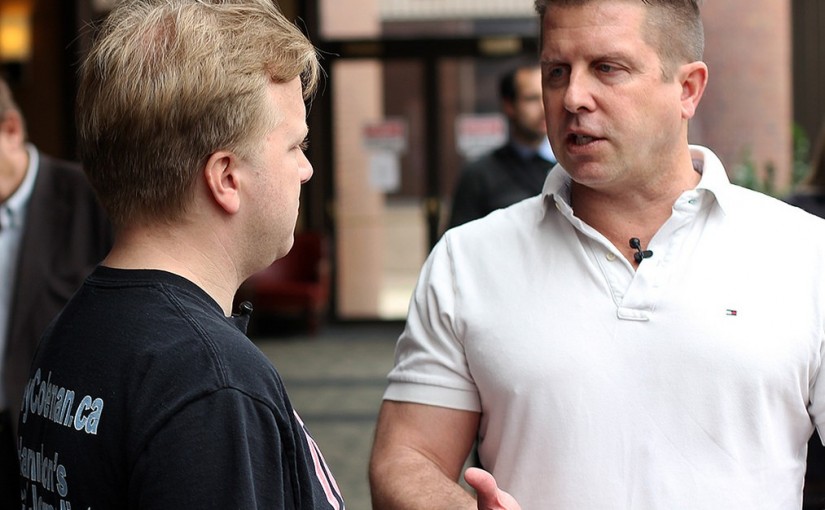
The Cost of Watchdog Journalism and Declining Journalism
The slow decline in journalism in the early 1990s became a crisis in the 2000s as advertising’s marriage of convenience to commercial journalism ended. Advertising found more cost-effective means of reaching audiences with the widespread adoption of smartphones and mobile.
Even at the peak of the advertising age of journalism, watchdog journalism was subsidized by more profitable sections of the newspapers and classifieds. Watchdog journalism was never funded by advertising dollars, because it is labour-intensive and costly.
In Hamilton, our municipal “freedom of information” office charges hundreds of dollars for the most simple request, our local hospitals charge thousands or tens of thousands of dollars (such as $12,887.77 for senior exec and Board expense claims) for simple information requests, and McMaster University in the past ignored an IPC order to release the contract of its executive head for months.
Fighting for public access to public information in Hamilton is expensive.
Watchdog journalism requires being at hundreds of hours of public meetings each month, spending hundreds of hours reading documents, researching issues, and many hours of professional development to ensure the proper knowledge to write in-depth evidenced based articles.
There are costs to streaming, communications, office space, equipment, travel, and – to make a career from watchdog journalism – a salary for the journalists.
You get what you pay for in journalism.
There is only one effective means of funding sustainable watchdog journalism: having readers who are monthly patrons supporting the work.

Funding Based Upon the 90-9-1 Internet Rule
To be effective in providing a public goal, public interest journalism must be accessible to all. To be sustainable, it must be funded.
Based on the 90-9-1 model:
9% of readers are willing to become patrons with a modest monthly contribution that will help support the operating costs of the outlet. At $10 per month, it will take approximately 800 of these patrons to fund the operating costs of hiring one investigative journalism.
1% of readers will become patrons with a monthly contribution similar to what they pay for their newspaper subscription at $20 per month. It takes approximately 400 of these patrons to fund an investigative journalist.
Monthly patrons get advance access to tickets for panel discussions, with $20 patrons getting first, and will have access to a future mobile app that will include audio-only versions of web streams.
Panel discussion tickets are free as part of the editorial mandate to serve all Hamiltonians and to ensure no one is prevented from being part of conversation.
The monthly patron model is the only one that can sustain watchdog journalism.
It enables an outlet to assign journalists with a long-term commitment to fearless journalism, to launch investigations into problems needing solutions, and to be free from undue influence from those we cover.
This enables a journalist to make the return commitment to serving the public interest.

Less Revenue, More Journalism?
The patron model of funding journalism won’t produce the windfalls that the advertising golden age did for newspapers.
It would be nice to return to the days of mass employment for journalists who could expect upper-middle-class and upper-class pay, many perks, and a good likelihood of becoming a desk editor after a couple of years of “paying dues” as a reporter. (I know I’d like to enjoy an easier career path.)
It would be nicer still for all the other people employed in industrial journalism – the advertising sales staff, the circulation staff, printing staff, and delivery staff, to name a few. (We often forget about all the job losses outside of newsrooms.)
Today, we can remove the costs of operating a print newspaper – overhead, facilities, printing presses, newsprint, ink by the barrel (I don’t we’ll ever be able to replace the saying “never quarrel with a man who buys ink by the barrel.”), and delivery.
These costs are no longer required to produce watchdog journalism. Web hosting of a couple hundred dollars a month can provide this function. (Good hosting on a dedicated secure server is why the cost is hundreds of dollars per month.)
What about the publisher’s suite? No longer needed. The watchdog journalism outlet does not seek to wine and dine with the powerful.
The watchdog journalist seeks to be a sentry of the public watching the powerful and calling attention to matters of public importance.
Remove profit margins that were the envy of most industries – Frank Blethen, the fourth, family publisher of the private family-owned Seattle Times testified to the United States Congress in 2003 that conglomerate media newspapers enjoyed profit margins of “30 percent or greater”. Canadian newspapers enjoyed considerable profits similar to their American cousins.
As noted in his book The Deal from Hell: How Moguls and Wall Street Plundered Great American Newspapers, journalist James O’Shea shows the editorial budgets of some major newspapers was less than a fifth of revenue.
This before problems like for the debt burdens facing conglomerates such as Postmedia which is laying off journalisms to finance debt obligations to investors.
More journalism can be produced with less revenue because both costs of production have decreased and independent journalism answers to readers, not stockholders.
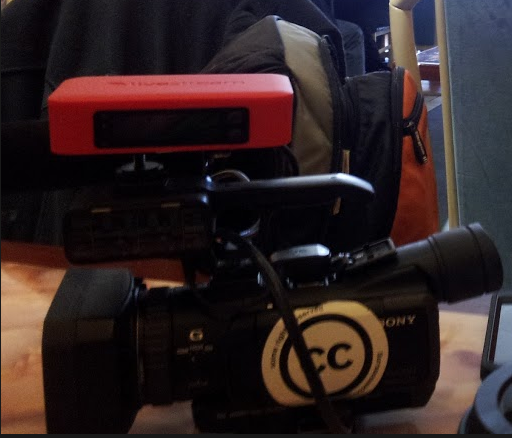
Focus on Journalism, Build the Foundation to Do So
The monthly patron system for ThePublicRecord.ca will use trusted secure third-party payment systems PayPal and Stripe to process patron contributions. These payment services are secure and charge reasonable rates.
I’m a journalist, not a information security professional. No journalism startup should be handling sensitive information data such as credit card numbers. The startup needs to have a secure site to properly integrate the payment service.
Sites such as Beacon or Patreon take cuts of subscriptions between 5% to 15%. This is not sustainable as an outlet grows.
An added challenge using these sites is that subscriptions are in US Dollars, meaning currency exchange fees for patrons and the outlet. In addition, fluctuations in exchange rates cause frustration for patrons who can see their contribution spike in Canadian Dollars as the Loonie loses value to the Greenback.
Crowdfunding for Capital and Creating an Opinion for One-Time Contributions
The monthly patron model will provide operating revenue and, eventually, it will be able to cover capital replacement costs.
During the startup phase – the first five years – the monthly patron model is unlikely to be able to fully cover capital costs and special projects (in Hamilton FOI fees).
This means – especially in Canada – that crowdfunding is needed to enable local watchdog journalism outlets to make the capital investments. (In America, there are numerous foundations to fund journalism startups and innovation, most famously the Knight Foundation.)
There are supporters who are unable or uncomfortable making a commitment as a monthly patron. Many monthly patrons will contribute additional financial support to the outlet for capital or special projects. But, one-time contributions are not sustainable and a journalism outlet cannot be built on them.
Applying these contributions to one-time expenses is an effective means of including them in the business model.
The current crowdfunding campaign is an example. The capital investments the campaign will fund are a significant need to make the outlet sustainable and to create the solid foundation needed for growth.
In the next few months, capital investments will be needed for podcasting equipment and for a complete website infrastructure revamp to facilitate a mobile application to better serve patrons and readers.
These investments are critical to growing, serving new readers, and earning the trust of new patrons.
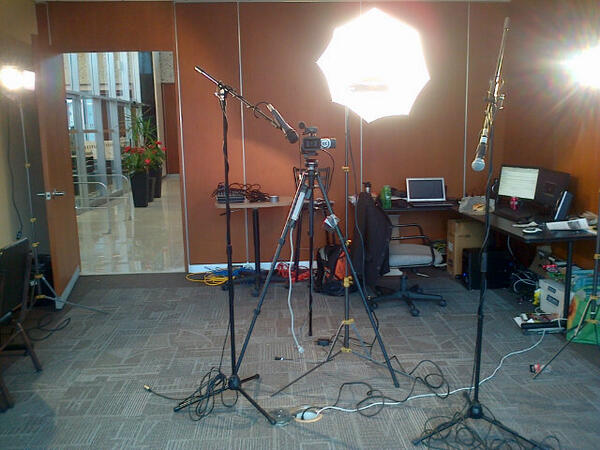
The 2015 Growth Plan: Podcasting, Mobile App, and Monthly Discussion Panel Events
For 2015, the goal for The Public Record is to focus on building the infrastructure for growth in the fall.
The current campaign will fund equipment and web server upgrades.
In the spring, there will be a small campaign to purchase microphones, headphones, sound proofing materials and other equipment to create a small podcast studio in the office. This equipment will also serve to podcast panel discussions in the community.

Panel Discussions – Informing and Building Relationships, Podcasts
Panel discussions will form a major part of the work of The Public Record. Our “After Council” podcast, the Transit Panel, and our joint event with CANADALAND were informative and fulfilled the outlet’s mandate to create informative discourse.
Next, we’re going to look at Inclusionary Zoning, Six-Storey Wood Frame Structures, and the future of Jackson Square as the City looks at selling it.
With sustainable funding, I’ll be able to focus my work on hosting an “After Council” podcast the Thursday evenings following each Council meeting and moving the discussion to all of Hamilton’s wards and communities.
These events build community and advance good civic discussion. They build relationships with patrons and readers helping to make the outlet sustainable.
They also inform our coverage, the recent transit panel was informative and made for better coverage the next day when it was debated at Council.

Mobile – The Opportunity to create a Patron Bonus Experience While Maintaining Public Service
ThePublicRecord.ca will need a significant investiment of time this summer to build the backend of the website to support future database apps (a building development tracker is top of the list), more audio and video content, better real-time news updates, and to support a mobile app for patrons.
The mobile app will enable patrons to get customized notifications, having a real-time tip forum for information sharing and collaborative news gathering, and an audio-only version of live streams. (Audio streaming on the Internet is more complex and costly than video, due to YouTube and the economies of scale.)
The real growth opportunity for fulfilling the mandate of public interest journalism is in collaboration and mobile. It’s resource intensive. I hope we’ll build a mobile app and website that can be shared with other watchdog startups that will form in other Canadian cities once ours is sustainable and successful.
Growth – Hiring Hamiltonians To Cover Hamilton
More Hamiltonians will benefit from the journalism and number of patrons will increase as the site’s reach grows.
I expect that in the fall, the site will have revenue to start hiring Hamiltonians to cover more local stories, starting on a freelance basis.
Eventually, once the revenue from patrons exists, we’ll hire these Hamiltonians full-time and expand coverage to other public institutions – such as streaming the Hospital Board and the McMaster University Board of Governors.
Next spring, the plan is to expand into an office space with a professional podcast studio that will be open to patrons to record your own podcasts.
Over time, Hamilton will be able to have a healthy media landscape with numerous outlets covering our City, ensuring a healthy fourth estate.
Then, The Public Record will send reporters to Queen’s Park and Parliament Hill. Each day, the provincial and federal governments will answer questions from Hamiltonians. Imagine if the Premier couldn’t dodge questions about The Big Move [LRT] and the Prime Minister couldn’t dodge issues like US Steel and federal funding for affordable housing.
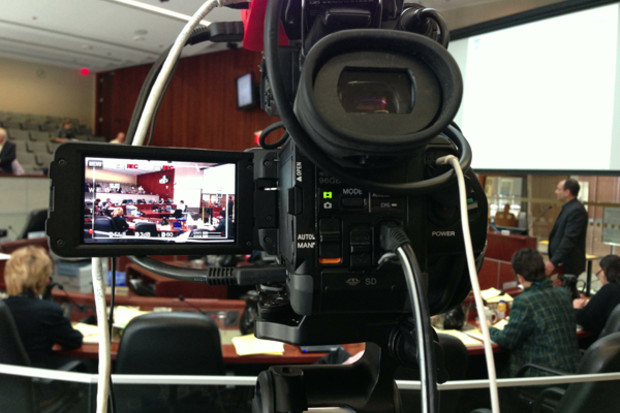
A Public Good Worth Having And Supporting
The Internet 1% Rule provides a good guide for building the future of journalism by providing a guide for providing content to all, while building a business model funded by patrons happy to support watchdog journalism.
Watchdog journalism is a public good, one which we need more than ever.
We have to start someone to address the challenges of making journalism sustainable. We do that here and now.
Hopefully, I’ve convinced you that its worth supporting and you’ll click this link to add your support to the crowdfunding campaign, and will sign up to be a monthly patron of my work and ThePublicRecord.ca.
Postscript: I wish to thank Jesse Brown, Mathew Ingram, and Jim Heaney for being part of the January 9th panel discussion on business models. All three of them insprired me to continue my efforts towards sustainability and give me great advice on the path.
And a video: Jesse Brown says of me “You might be considered a strange guy”
